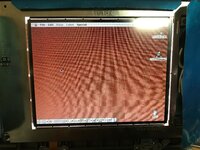3lectr1cPPC
Well-known member
I picked up a 180c a few months ago. It worked but really needed the screen recapped, so I did that and the picture quality looks better now (artifacting is gone - I had a thread on it a few months back), but it’s got another problem.
When I first turn it on, the screen looks perfect, but it will slowly down the contrast until white objects look dark gray, and readability goes down a lot.

Does this mean it’s time to recap the display inverter board, or is it a different problem? This is an active matrix display, and it has no control for the contrast, neither hardware or in software.
The inverter board has 2 small through-hole electrolytics, and they both look fine. Could 2 small caps really cause this big of an issue?
Edit: When it's starting to drift and go dark, it will "flash" back to normal for a second a handful of times until it eventually just stays dark.
Thanks!
3lectr1c
When I first turn it on, the screen looks perfect, but it will slowly down the contrast until white objects look dark gray, and readability goes down a lot.

Does this mean it’s time to recap the display inverter board, or is it a different problem? This is an active matrix display, and it has no control for the contrast, neither hardware or in software.
The inverter board has 2 small through-hole electrolytics, and they both look fine. Could 2 small caps really cause this big of an issue?
Edit: When it's starting to drift and go dark, it will "flash" back to normal for a second a handful of times until it eventually just stays dark.
Thanks!
3lectr1c
Last edited:



